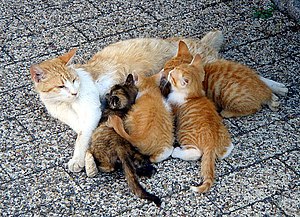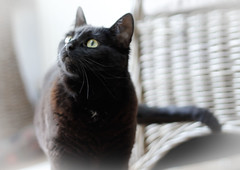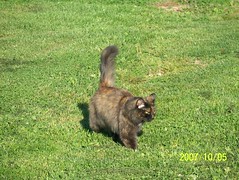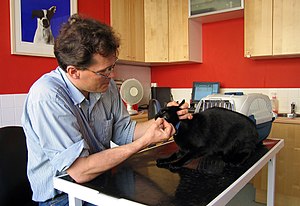|
|
| A basic litter box and a bag of litter (Photo credit: Wikipedia) |
How does one go about choosing the best cat litter for their cat?
Assume that you are new to the pet cat ownership arena and you want to choose the best cat litter for your newly purchased cat. This actually happened to me several years ago. I walked into a few of the name brand pet stores and was mesmerized by the wide choice of products available. I literally did not know where to start.
Cat litters can be placed into seven categories:
1)Clumping/ non clumping or (scoopable/ nonscoopable) 2)Odor controlling or non order controlling 3)Scented or non scented 4)Diagnostic or non diagnostic 5)Natural ingredients or non natural ingredients 6)High Bulk Density or Low bulk density. 7) Coarse Pellets or fine Pellets.
In short, there are a number of features on which to differentiate between the products.
In addition, although all cat litter products absorb the cat's urine, the level of absorptivity varies with the different products.
The final major variance between the products of course is price per lb or unit volume of the product.
What is the meaning of some of these categories?
Clumping or scoopable means where ever the cat urinates in the litter the wetted particles will adhere together to form a clump or lump. This lump can now be scooped (scoopable) from the dry cat litter. This can be done by hand or it may be mechanized. For a good product, the lumps should be firm and should not break apart when allowed to free fall from a height of about 12 inches.
Products that does odor control has an ingredient that destroys bacteria producing odor other products mask the odor by using a scented ingredient.
Diagnostic type cat litter is a recent development in the industry and only a few products have this feature. What these products are attempting to do is provide early warning for urolithiasis, which is usually accompanied by bacterial infection, in the cats. This phenomenon is more common in the winter months and when the cat has low water intake. Normally, by the time it is recognized in the cats the process is well advanced and the only satisfactory treatment is surgical removal of the calculi. If discovered early, gentle manipulation of a sound or catheter often may dislodge small calculi. Dilating the urethra by alternately injecting sterile water or saline solution under pressure and manually compressing the bladder may also relieve the obstruction.
However, due to the inherent difficulties of surgery involving these organs, the results are not always favorable, besides the procedure is usually expensive. The early warning feature of some products involves a color change of the product, the sick cat's urine causing the clumps to change from it's normal color to some other predetermined color.
It is an advantage for the product to be made from natural ingredients as disposal should not be a problem environmentally. Some environmentally friendly products can be disposed of by simply flushing in the toilet. However this cannot be done for those products with high bulk density or those with toxic ingredients.
It is reported that cat faeces may be contaminated by a type of bacteria that is harmful to some sea otters,this is a concern if there is a practice of dumping raw sewage into the sea.
The bulk density of the product mainly affects its absorptivity. Those with high bulk density have low porosity and so are less efficient in absorbing the urine on a per unit volume basis of the product. The result is unless you are using a large quantity of this product, some urine may seep to the bottom of the cat litter box and you are prone to a lingering smell. In other words, you have to purchase a larger quantity of this product to do the same job as the product with lower bulk density. Products with high bulk density also present a handling problem.
Coarse versus fine pellets: Coarse pellets tend to provide less comfort for the cat whereas fine pellets may have a dust problem. The key is to find the best balance in size grade, this may be influenced by the size an age of the cat. However, some products that have fine particles mitigate dustiness by including anti tracking ingredients as well as anti dustiness ingredients.
Having reviewed the features of cat litter products on the market, we are in a position to define the features that would be included in the best product:
It should have strong clumping or scoopable properties, have ingredients that provide effective odor control (destroying odor causing bacteria), have good diagnostic properties, made mainly from natural ingredients and have low bulk density with medium size pellets. It should not pose a dust problem by having dust control ingredients if necessary. Above all, it should be reasonably priced on a per unit volume basis.
Have you come across any product that meet the above criteria? If you have that is the best cat litter product in your area.
ABOUT THE AUTHOR:
The author, Delroy Rainford, is a chemical engineer by profession and currently resides in Snellville, Georgia USA. He is passionate in caring for his two year old cat, Gram. He also did some work in developing a unique cat litter product. For further information visit:
http://www.daracpetsupplies.com
Further information on, Healthalertlitter, the product the author participated in developing can be obtained from the author's website












